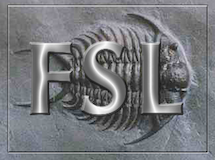200 results.
The Virtual Brain
Visit Website
"TheVirtualBrain is a framework for the simulation of the dynamics of large-scale brain networks with biologically realistic connectivity. TheVirtualBrain uses tractographic data (DTI/DSI) to generate connectivity matrices and build cortical and subcortical brain networks. The connectivity matrix defines the connection strengths and time delays via signal transmission between all network nodes. Various neural mass models are available in the repertoire of TheVirtualBrain and define the dynamics of a network node. Together, the neural mass models at the network nodes and the connectivity matrix define the Virtual Brain.
TheVirtualBrain simulates and generates the time courses of various forms of neural activity including Local Field Potentials (LFP) and firing rate, as well as brain imaging data such as EEG, MEG and BOLD activations as observed in fMRI.
TheVirtualBrain is foremost a scientific simulation platform and provides all means necessary to generate, manipulate and visualize connectivity and network dynamics. In addition, TheVirtualBrain comprises a set of classical time series analysis tools, structural and functional connectivity analysis tools, as well as parameter exploration facilities by launching parallel simulations on a cluster."
BCI Award Foundation
Visit Website
"The BCI Award Foundation organizes the annual BCI Award and guarantees scientific objectivity by assigning an independent and international jury assembled with world-leading BCI experts who work with invasive and non-invasive brain-computer interfaces and neurotechnologies in both research and clinical environments to judge the submitted projects.
The BCI Award Foundation is a non-profit organization founded in 2017 in Austria, chaired by Christoph Guger and Dean Krusienski."
Neuroimaging Informatics Tools and Resources Clearinghouse
Visit Website
The Neuroimaging Tools and Resources Collaboratory (NITRC) is a neuroimaging informatics knowledge environment for MR, PET/SPECT, CT, EEG/MEG, optical imaging, clinical neuroinformatics, imaging genomics, and computational neuroscience tools and resources.
FSL
Visit Website
The FMRIB Software Library, abbreviated FSL, is a software library containing image analysis and statistical tools for functional, structural and diffusion MRI brain imaging data.
FSL is available as both precompiled binaries and source code for Apple and PC (Linux) computers. It is freely available for non-commercial use.
HPA Brain Atlas
Visit Website
The Human Protein Atlas (HPA) is a Swedish-based program started in 2003 with the aim to map all the human proteins in cells, tissues and organs using integration of various omics technologies, including antibody-based imaging, mass spectrometry-based proteomics, transcriptomics and systems biology. All the data in the knowledge resource is open access to allow scientists both in academia and industry to freely access the data for exploration of the human proteome.
"The Brain Atlas explores the protein expression in the mammalian brain by integration of data from three mammalian species (human, pig and mouse). Transcriptomics data is combined with antibody-based protein localization in human samples and whole mouse brain. Protein-coding human genes (and one-to-one orthologues in pig and mouse) is provided with a brain-centric summary page, showing available expression data (mRNA) for brain samples grouped into 10 main brain regions, as well as data for pituitary gland, retina, corpus callosum and spinal cord. Series of sections, representing the whole mouse brain, analyzed for 300 genes are available as large 100 megapixel immunofluorescence images with microscopic resolution to explore the protein location in mouse brain (also summarized into 127 regions of interest). A selection of human localization data is also imported/linked from the Tissue Atlas and summarized on the Brain Atlas. "



